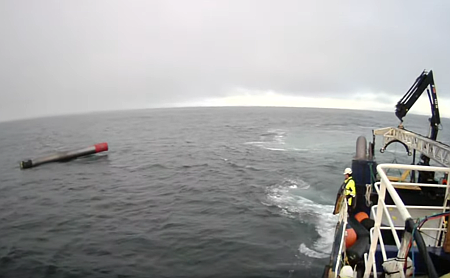Collins Aerospace tests its new spacesuit on the Zero Gravity airplane
On January 30, 2024 Collins Aerospace, one of two companies that NASA has contracted to design and build new spacesuits for its future missions, successfully tested its new spacesuit on the Zero Gravity airplane, where it was able to have a person use the suit in short but weightless conditions.
Collins is designing its suit in collaboration with ILC Dover and Oceaneering. Former NASA astronauts, John “Danny” Olivas and Dan Burbank, each donned the suit and performed a series of test objectives while onboard a Zero Gravity plane that’s able to perform parabolic maneuvers to simulate microgravity for short bursts. They were surrounded by several support personnel who were gathering data about the suit performance.
In total, they performed 40 parabolas during the flight. Collins said the primary goals included “evaluation of the suit’s pressure garment system fit and functionality, use of International Space Station tools and interfaces, and reviewed performance of the new Extravehicular Mobility Unit, or EMU, against the current design.”
The two spacesuit contracts (the second is with Axiom) are costing NASA about $335 million total to get the suits designed, built, and certified for use in spacewalks and ground operations on the Moon. Both companies appear on schedule to deliver those suits in less than three years.
Previously, NASA had tried to build new spacesuits on its own, and had spent a billion dollars over fourteen years while building nothing. The contrast in this story between the government and private enterprise should be clarifying to everyone.
On January 30, 2024 Collins Aerospace, one of two companies that NASA has contracted to design and build new spacesuits for its future missions, successfully tested its new spacesuit on the Zero Gravity airplane, where it was able to have a person use the suit in short but weightless conditions.
Collins is designing its suit in collaboration with ILC Dover and Oceaneering. Former NASA astronauts, John “Danny” Olivas and Dan Burbank, each donned the suit and performed a series of test objectives while onboard a Zero Gravity plane that’s able to perform parabolic maneuvers to simulate microgravity for short bursts. They were surrounded by several support personnel who were gathering data about the suit performance.
In total, they performed 40 parabolas during the flight. Collins said the primary goals included “evaluation of the suit’s pressure garment system fit and functionality, use of International Space Station tools and interfaces, and reviewed performance of the new Extravehicular Mobility Unit, or EMU, against the current design.”
The two spacesuit contracts (the second is with Axiom) are costing NASA about $335 million total to get the suits designed, built, and certified for use in spacewalks and ground operations on the Moon. Both companies appear on schedule to deliver those suits in less than three years.
Previously, NASA had tried to build new spacesuits on its own, and had spent a billion dollars over fourteen years while building nothing. The contrast in this story between the government and private enterprise should be clarifying to everyone.













